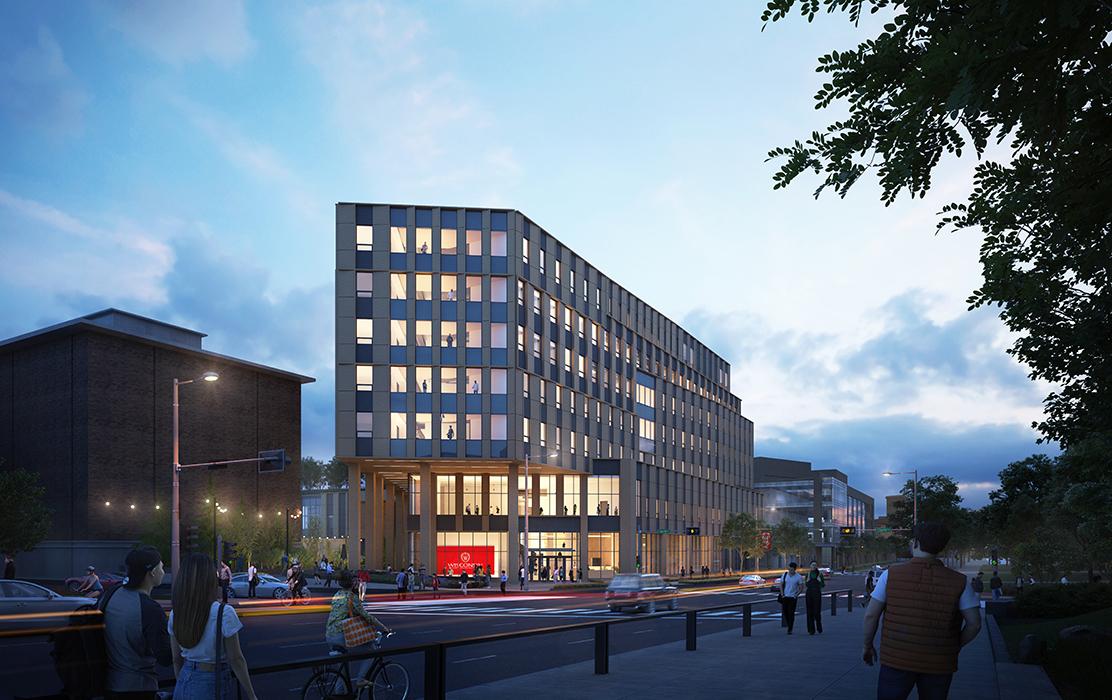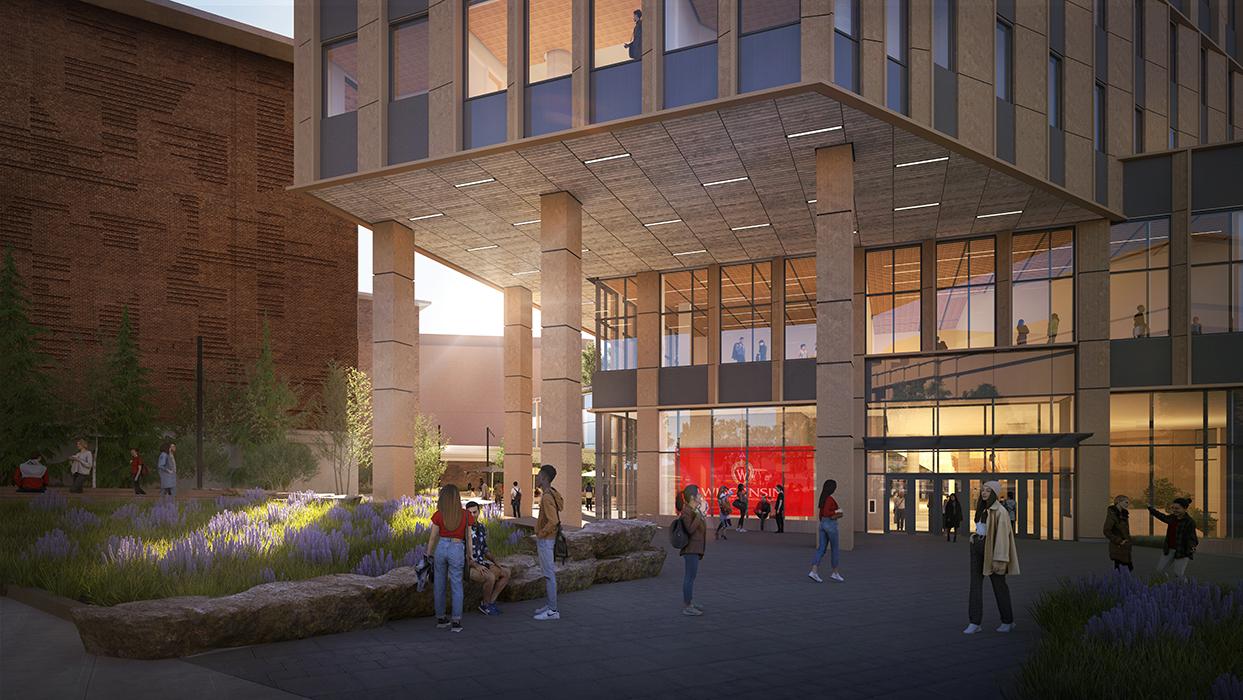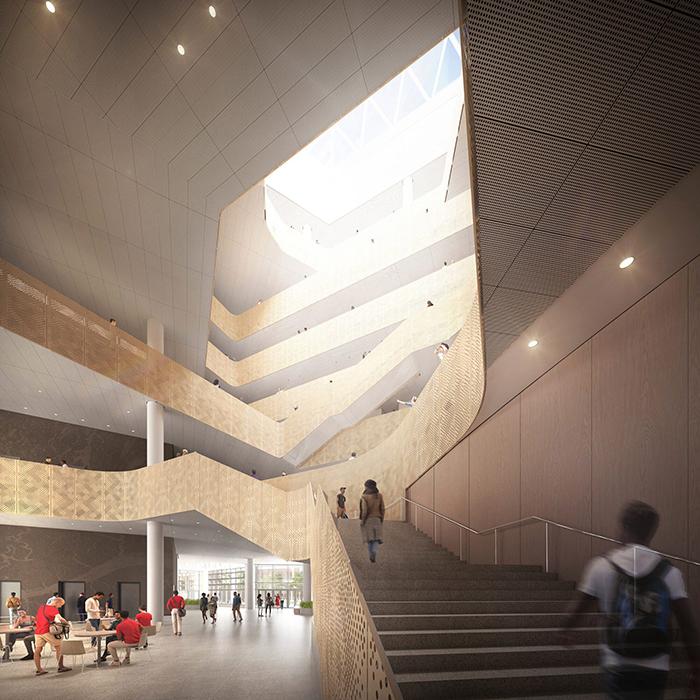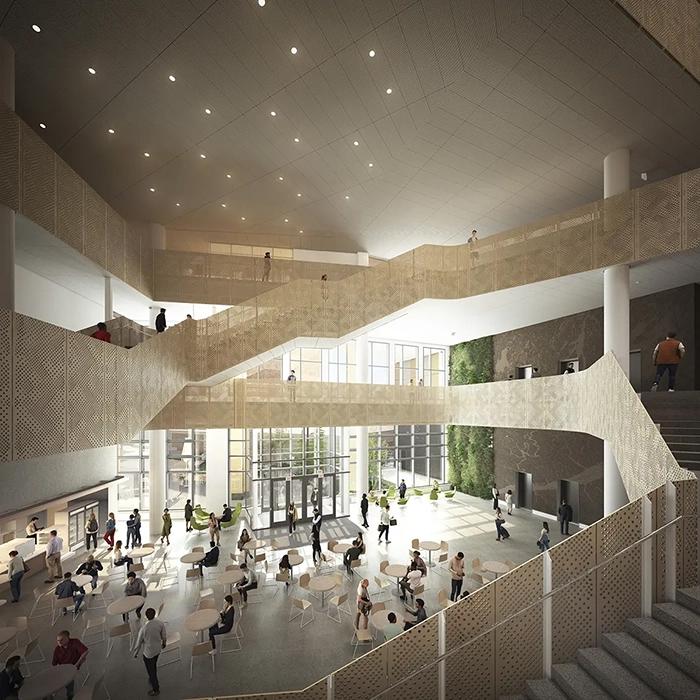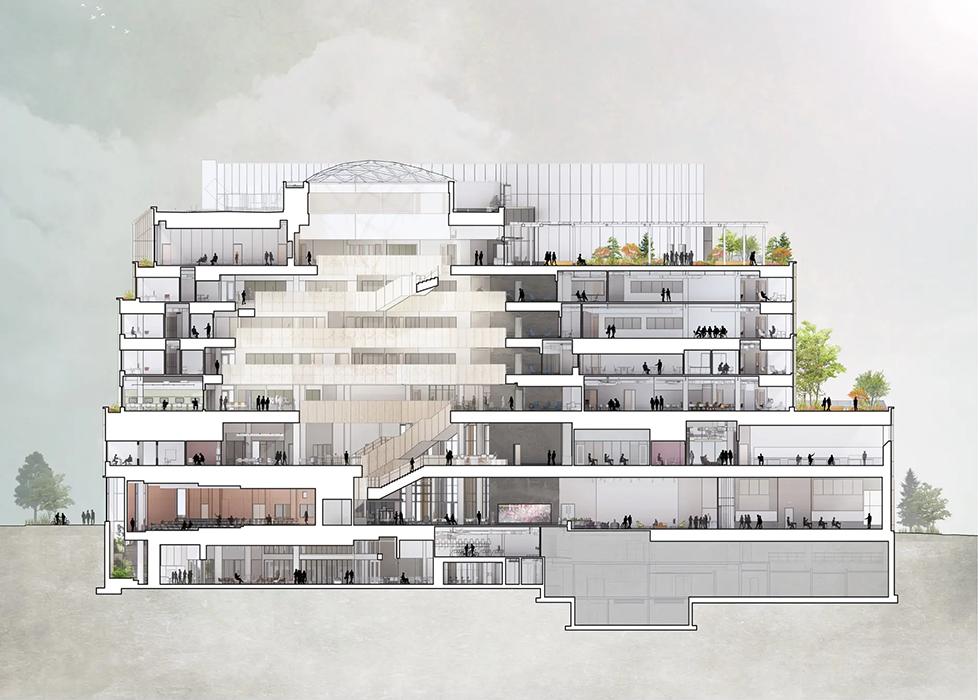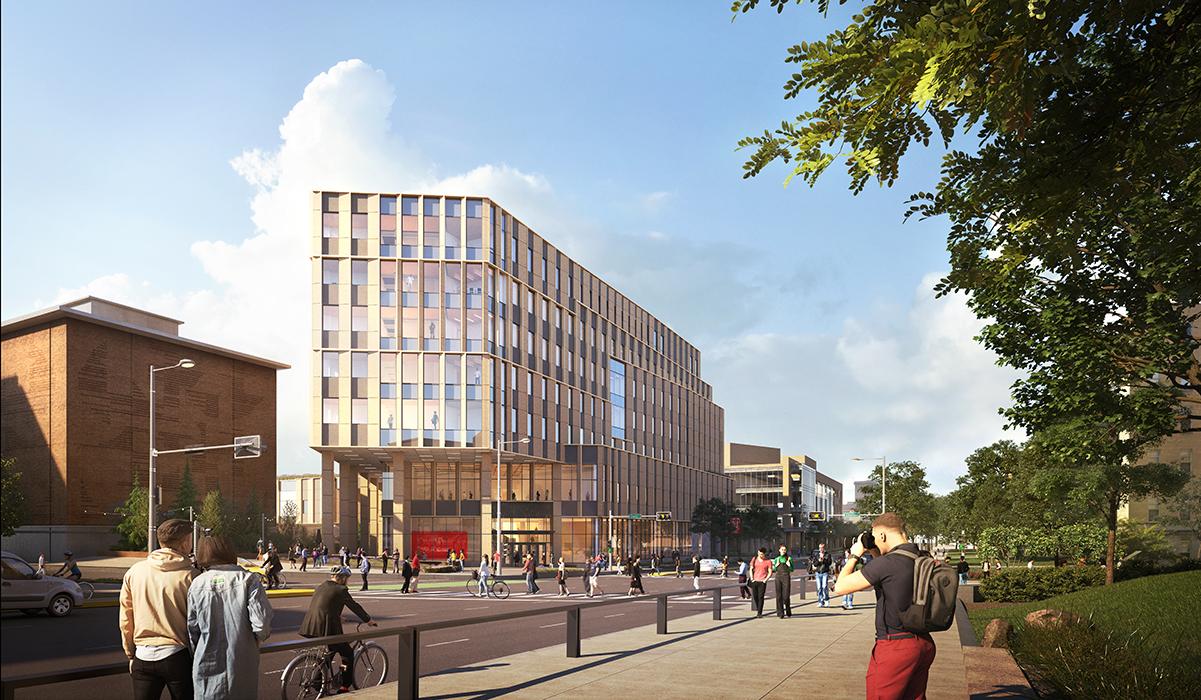University of Wisconsin−Madison, Morgridge Hall
A new academic building creates an intersection between technology and community, establishing common ground within the School for Computer, Data & Information Sciences (CDIS).
overview
The University of Wisconsin Madison’s School of Computer, Data & Information Sciences (CDIS) is receiving a new home in Morgridge Hall. The 350,000-square-foot, eight-story structure, located directly east of the Wisconsin Institute of Discovery Building, will allow space for more cross-disciplinary interactions and experiences, where high-tech learning and collaboration come together under one roof. The project serves as a new anchor for the campus’s tech corridor for students, researchers and industry partners.
We provided structural design and vibration consulting services to Kahler Slater, working in collaboration with LMN Architects, while also providing construction engineering services to the general contractor, Findorff, including a Phase 1 Tekla model, connection engineering and onsite construction logistics. The Morgridge Hall superstructure includes eight occupied floors, multiple roof terraces and a stepped, below-grade structure connected to (and partially supported by) multiple adjacent below grade structures.
highlights
- The project features seven unique monumental stair structures that wrap around the full-height interior atrium, which is crowned by an intricate glass skylight.
- Located above an existing subgrade structure, the building’s engineering challenges include intersecting full-height trusses and built-up plate girder systems to integrate structural function with architectural vision.
- More than 60 column transfers create column-free spaces across auditoriums, laboratories and wellness spaces.
- Additional coordination with MEP engineers and contractors resulted in more than 450 beam web penetrations to optimize architectural ceiling depths while maintaining structural efficiency.
- Typical floor-to-floor height is about 14 feet, with increased heights at levels B1, L1 and the roof (around 22 to 25 feet).
- Our vibration scope included an assessment to address the impact of vibrations from the parking garage on the sensitive lab spaces. The team designed a spring-supported loading dock to minimize vehicle-induced dynamic disturbances.
Our Team




